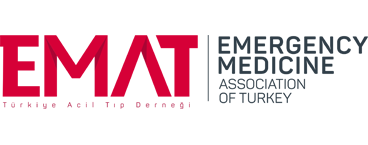Uluslararası acil tıp federasyonu acil tıp için model müfredat
Cherri Hobgood1, Venkataraman Anantharaman2, Glen Bandıera3, Peter Cameron4, Pinchas Halpern5, James Hollıman6, Nicholas Jourıles7, Darren Kılroy8, Terrence Mullıgan9, Andrew Sınger10
1University Of North Carolina School Of Medicine, Chapel Hill, Nc, Usa
2Singapore General Hospital, Singapore, Singapore
3St. Michael’s Hospital, University Of Toronto, Toronto On, Canada
4The Alfred Hospital Emergency And Trauma Centre, Monash University, Melbourne, Australia
5Tel Aviv Medical Center, Tel Aviv, Israel
6Uniformed Services University Of The Health Sciences, Bethesda, Md, Usa
7Akron General Medical Center, Akron, Ohio, Usa
8College Of Emergency Medicine, London, United Kingdom
9Erasmus University School Of Medicine, Rotterdam, The Netherlands
10Canberra Hospital, Woden, Australia
Anahtar Kelimeler: Müfredat, uluslararası acil tıp; tıp eğitimi; tıp öğrencileri
Özet
There is a critical and growing need for emergency physicians and emergency medicine resources worldwide. To meet this need, physicians must be trained to deliver time-sensitive interventions and life-saving emergency care. Currently, there is no internationally recognized, standard curriculum that defines the basic minimum standards for emergency medicine education. To address this lack, the International Federation for Emergency Medicine (IFEM) convened a committee of international physicians, health professionals and other experts in emergency medicine and international emergency medicine development, to outline a curriculum for foundation training of medical students in emergency medicine. This curriculum document represents the consensus of recommendations by this committee.
The curriculum is designed with a focus on the basic minimum emergency medicine educational content that any medical school should be delivering to its students during their undergraduate years of training. It is designed, not to be prescriptive, but to assist educators and emergency medicine leadership in advancing physician education in basic emergency medicine content. The content would be relevant, not just for communities with mature emergency medicine systems, but also for developing nations or for nations seeking to expand emergency medicine within current educational structures. We anticipate that there will be wide variability in how this curriculum is implemented and taught, reflecting the existing educational milieu, the resources available, and the goals of the institutions’ educational leadership.

